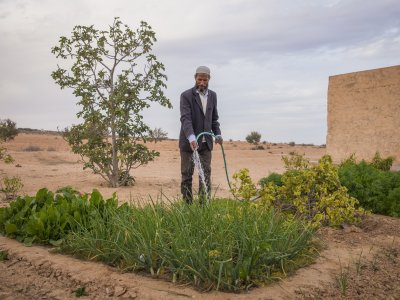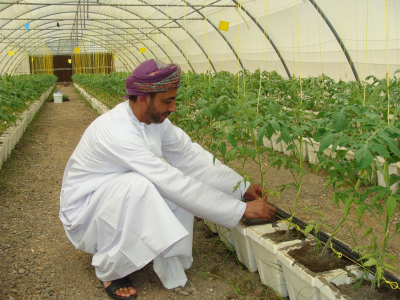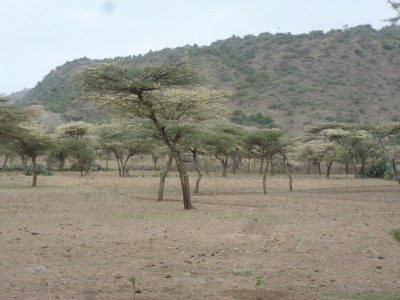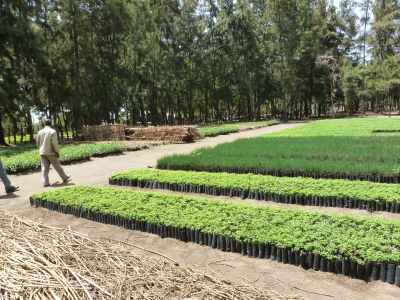ABOUT US




Governance tool for sustainable water resources allocation in the Mediterranean through Stakeholder’s collaboration. Towards a paradigm shift in groundwater management by end-users





Governance tool for sustainable water resources allocation in the Mediterranean through Stakeholder’s collaboration. Towards a paradigm shift in groundwater management by end-users
The GOTHAM Tool (GTool) will allow to: -PO1. Develop a user-driven Groundwater Governance Framework (GGF) that could be applied in all the Mediterranean countries -PO2. Carry out a comprehensive analysis and a complete diagnostic of the water balance and water quality dynamics in Mediterranean groundwater bodies -PO3. Determine the best alternatives for groundwater quality and quantity improvement -PO4. Effectively implement a set of economic policy instruments in groundwater management -PO5. Predict future water demand and drought events
The overarching objective of the GOTHAM project is to develop and validate a user-driven tool that enables effective groundwater governance to ultimately preserve the quantity and quality of this strategic resource in the Mediterranean basin.The GOTHAM Tool (GTool) uses an integrated methodological approach that targets optimal allocation of water resources from an environmental, social and economic perspective, including stakeholder knowledge, priorities and behaviour
Problems in aquifers of the Mediterranean Basin: 1. Underground water bodies are seriously threatened by overexploitation and, in coastal areas, salinization due to seawater intrusion 2. Pollution often takes years before it is detected in groundwater […] so there is a strong need to […] real-time assessment of aquifer remediation efficiency 3. Pressure on Mediterranean groundwater resources is currently jeopardizing both farming activities and ecosystem functioning, including the associated wetlands 4. (D) All water balance components and water quality and quantity risks related to the intensive agricultural activities […] i) water demands and their management; ii) the geo-physical aspects of water recharge and depletion; iii) non- conventional water recharge; iv) seawater intrusion and groundwater pollution. 5. Development and validation of effective water management – in particular groundwater balances and optimised allocation systems for agricultural purposes, monitoring […] and modelling tools to assess and forecast […] aquifer status and trends […], including integrated planning and groundwater quality management 6. Attention should be dedicated to the temporal water availability and variability of groundwater quality 7. The socio-economic dimensions of sustainable management of groundwater resources will be analysed, focusing on issues like water pricing and water access for irrigation 8. Tools and solutions for decision support on remediation strategies will be produced considering local and regional water governance constraints 9. Capacity building activities on groundwater resources knowledge and sustainable management to support decision makers on remediation strategies 10. Ensuring replicability of the efforts in other Mediterranean areas with similar […] constraints
1. One of the main objectives of the GTool, articulated through its Optimised Water Allocation Module, is to optimize the Water Resource Mix in a certain location in order to protect Mediterranean aquifers and effectively prevent quantitative problems (e.g. overexploitation) as well as qualitative issues (seawater intrusion, among others) 2. The Water Balance and Water Quality Dynamics Module of the GTool makes use of geochemical modelling and data analytics from data loggers and water sampling information to assess the natural attenuation capacity (NAC) of the groundwater bodies, and thus calculate real-time aquifer remediation efficiency. Specifically, a set of remediation indicators will be used depending on the type of aquifer contamination 3. The optimised allocation of different water resources (Optimised Water Allocation Module), the precise determination of existing water demands (Water Availability and Demand Forecasting Module) and the effective involvement of water users in GTool implementation (User’s Engagement Module) would make it possible to provide greater water security and resilience in the face of water competition between users and extreme drought events 4. GTool will combine the use of Remote Sensing and Dynamic Modelling techniques to predict water demands and correlate past, present and future land-use changes to state aquifer variables (Water Availability and Demand Forecasting Module), such as piezometric level or concentration of salinity. A specific module will be developed for assessing the potential chemical, physical and microbiological risk due to the use of non-conventional water resources, including economic, hydrogeological, chemical and regulatory indicators (MAR and Aquifer Remediation Module). During aquifer water quality characterization (Water Balance and Water Quality Dynamics Module), advanced statistical and geochemical methods will be applied to determine the processes leading to groundwater pollution 5. GTool will permit the determination of groundwater budget components (Water Balance and Water Quality Dynamics Module) by applying multiple recharge methods under several climate change projections as well as natural background concentration for priority compounds. Groundwater withdrawals (outputs) will be directly obtained from real exploitation data provided by Groundwater Users Associations (GWUAs). An Optimised Water Allocation Module, with a focus on adding value to groundwater users, will simulate the effects of different water scenarios. The monitoring (on site and distant) will be carried out in most representative control points by means of Decision-Making Indicators and remote sensing techniques. This monitoring will allow to give an overall view about the groundwater quantitative and chemical status (Water Balance and Water Quality Dynamics Module). Machine and deep learning algorithms (Water Availability and Demand Forecasting Module) will be used to forecast the evolution of different time series at short-term, groundwater recharge, water tables, electrical conductivity or turbidity, providing guidance on groundwater trend assessment 6. GTool will take advantage of several data analytics techniques (regression models, artificial neural networks or support vector machines, among others) to treat historic hydrological and meteorological time series (e.g. water table, electrical conductivity, rainfall, temperature, etc.) and forecast the temporal water availability and variability of groundwater quality (Water Availability and Demand Forecasting Module). The most explicative variables of the current hydrological situation will be integrated into a dynamic drought panel 7. GTool – Agro Economic Module will include issues like water trade, water pricing and water access for irrigation. Demand management reduction through irrigation optimization and water savings considering rebound effect will be assessed, as well as the implications of water irrigation decisions (social dimension based on farmer’s attitudes) for the sustainable groundwater use and Cost effectiveness analysis of a complete set of measures. The GTool will incorporate a virtual environmental to exchange water rights between both end-water users and publicadministration through Blockchain technology. 8. GOTHAM will evaluate the economic constraints for several aquifer remediation alternatives (MAR and Aquifer Remediation Module). A framework for increasing the effectiveness of remedial design decision-making at groundwater contamination sites will be applied. This framework will help to (1) select the best remedial design from a suite of possible ones; (2) estimate if additional data collection is cost-effective; and (3) determine the most important parameters to be sampled. The use of software components based of open-standards and open-specifications (i.e. FIWARE-based) will guarantee no-vendor lock-in and openness with respect to other systems. 9. Capacity building activities will be considered by developing a GGF to involve relevant local actors (regulators, water producers and suppliers and end-users) in co-creating (conceptualizing, designing, providing user experience, etc.) GTool through the Communities of Practices designed. Furthermore, the key actors’ engagement will be possible with local partners’ contribution: Spain (Cetaqua and JCUAPA1 and HIDRALIA2 both as stakeholder), Lebanon (ICU) and Jordan (NARC). As a function of the water efficiency of each water user, a specific module will be developed to allow water users entering their water requirements and show the ranking position (User’s Engagement Module). The obtained results will be compared between GWUAs involved in the project development. 10. Replication of the solution will be ensured through developing guidelines to implement GTool based on the lessons learned and main results obtained in Jordan and Lebanon replication case studies where findings can be pooled across the different water contexts, and commonalities and differences can be explored
1- Water Saving solutions: Innovative earth observation and ICT tools-based, Decision Support Systems for planning adaptation to global changes and anticipating droughts 2- Land and water sustainability: - New modelling routines for determining the basic components of the water cycle, including economic, social and technical aspects - Cost-effective and high-efficiency managed aquifer recharge and retention measures for floodplain renaturalization 3- Water Governance system: Development and review of water rights systems –ensuring allocations for all water users are based on up to date knowledge of the overall water balance, including that needed to sustain ecosystem